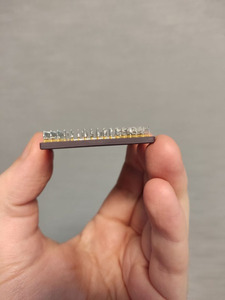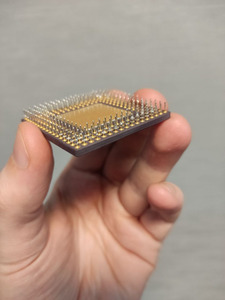First post, by rkurbatov
Hello there!
I've got a "new" CPU - i80486 DX2 66 with a problem I've just noticed.
There is an alloy on lots of CPU pins for some reason. And it doesn't look like somebody wanted to repair the pins. Like it's an alloy on pin, not the pin attachment. On some of them it's located close to the tip of the pin so the CPU cannot be put into the socket.
Can i fix that? If I want to remove it, what temperature should I use? I have very basic soldering skills.
Thank you in advance.
486: ECS UM486 VLB, 256kb cache, i486 DX2/66, 8MB RAM, Trident TGUI9440AGi VLB 1MB, Pro Audio Spectrum 16, FDD 3.5, ZIP 100 ATA
PII: Asus P2B, Pentium II 400MHz, 512MB RAM, Trident 9750 AGP 4MB, Voodoo2 SLI, MonsterSound MX300

